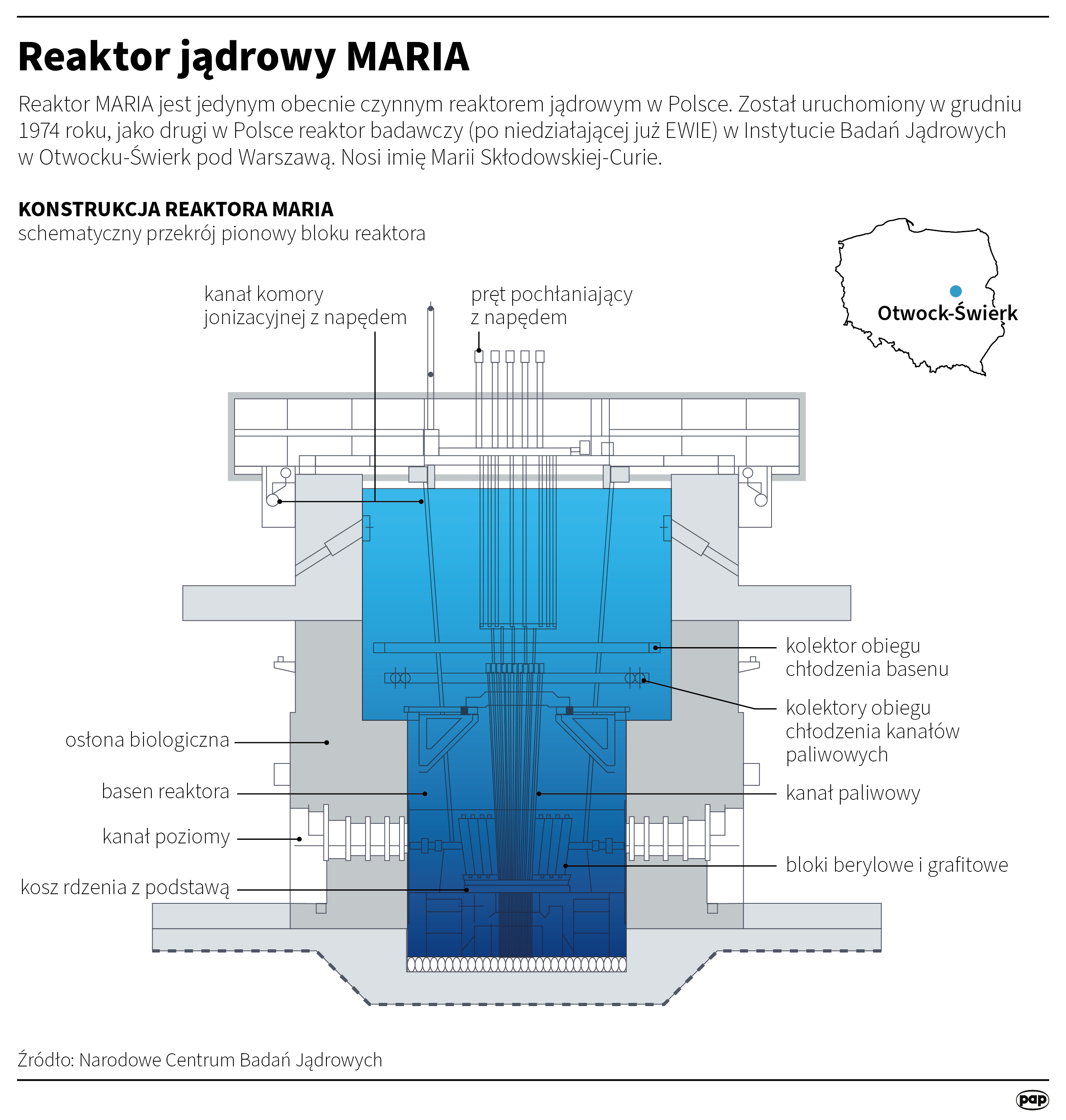PAA: permission to operate the MARIA reactor has been granted

The President of the National Atomic Energy Agency (NAEA) has issued a permit for the operation of the MARIA research reactor; the decision is valid indefinitely, the agency announced on Friday. According to Energy Minister Miłosz Motyka, the priority now is to implement the reactor modernization program.
The previous permit from the President of the National Atomic Energy Agency to operate the MARIA nuclear research reactor at the National Centre for Nuclear Research (NCBJ) in Świerk expired on March 31st of this year, after 10 years. The reactor has therefore remained offline since the beginning of April.

NCBJ submitted an application for a reactor operating license in August 2024. The application was incomplete. The President of the National Atomic Energy Agency (NAEA) urged NCBJ 11 times to remedy the formal deficiencies, making several hundred comments.
On Friday, the Agency announced that after a comprehensive assessment of the application submitted by the National Centre for Nuclear Research (NCBJ), the President of the PAA decided on July 31 on a new license for the MARIA reactor.
"The decision of the President of the National Atomic Energy Agency was preceded by many months of analysis and assessment of all documents attached to the application, during which the applicant was repeatedly requested to provide explanations and supplements on issues that were not precise and related to the safety of use of the facility," the National Atomic Energy Agency indicated.
She noted that, in accordance with the provisions of the Atomic Law, the draft permit was submitted for opinion to the Council for Nuclear Safety and Radiological Protection (BJiOR), and then to the applicant.
Ultimately, on July 31, 2025, the President of the National Atomic Energy Agency (NAEA) signed an indefinite operating permit for the reactor. In the permit, the President of the NAEA specified detailed operating conditions for the reactor, compliance with which by the National Centre for Nuclear Research guarantees the safe operation of the facility.
The agency noted that the reactor's operation, including compliance with the permit conditions, will be checked during regular inspections by nuclear regulatory inspectors of the National Atomic Energy Agency, as well as as part of periodic safety assessments.
The National Centre for Nuclear Research, in turn, stressed on Friday that the permit to operate the MARIA research reactor was issued for an indefinite period and allows for the continuation of the reactor's operation.
“For us, this is very good news and even a relief,” said Energy Minister Miłosz Motyka, quoted in the NCBJ press release.
He emphasized that the reactor plays a very important role, "but nuclear safety requirements must always be met." "Now that all the necessary analyses and procedures have been properly prepared and approved, Maria can return to operation, and the priority is to implement a modernization program that will allow it to operate for another 20 years," Motyka noted.
As NCBJ noted, the decision of the PAA president "ends a multi-stage administrative procedure, under which NCBJ submitted complete documentation, including safety analyses, operational procedures, emergency plans and detailed information on the physical and radiological protection of the facility."
Acting Director of the National Centre for Nuclear Research, Prof. Dr. Hab. Agnieszka Pollo, emphasized that receiving the new permit confirms "the high level of safety of our infrastructure and the competence of the team of engineers, physicists, and specialists involved in the operation of the MARIA reactor." "We are initiating the procedure for resuming the reactor's operation and will continue its research and service mission," she added.
The MARIA reactor is important for the production of certain isotope drugs intended to fight cancer.
According to the National Centre for Nuclear Research (NCBJ), MARIA is the only operational nuclear reactor in Poland. It has a capacity of 30 MW. Its construction began in June 1970 and it was commissioned in December 1974 at the then Institute for Nuclear Research (IBJ). According to NCBJ, the reactor was a significant global producer of iodine-131, used in the diagnosis and treatment of thyroid diseases. The reactor's operation satisfied 100 percent of Poland's demand for this substance. MARIA also satisfied approximately 10–20 percent of the global demand for molybdenum-99, which is used in cancer diagnostics and therapy.
PAA informed PAP at the end of July this year that NCBJ regularly provided it with explanations, which were subject to substantive analysis by the Agency's employees in terms of whether the MARIA reactor met the nuclear safety and radiological protection requirements.
"The latest concerns primarily concerned the safety classification of the reactor's systems, structural elements, and equipment, and are in the final stages of review by the National Anticorruption Agency (NAA)," the Agency reported. It noted that issuing a permit for the operation of a nuclear facility, such as the MARIA reactor, also requires submitting to the NAA the Company Emergency Plan, which the applicant must coordinate with the Voivode, the Voivodeship Commander of the State Fire Service, and the Voivodeship Commander of the Police.
The President of the National Atomic Energy Agency (NAEA) has six months to issue a decision, counting from the date the NAEA receives a complete application. This deadline is suspended if, for example, the nuclear regulator requests additional information or clarification. (PAP)
Science in Poland
ab/ malk/
naukawpolsce.pl





